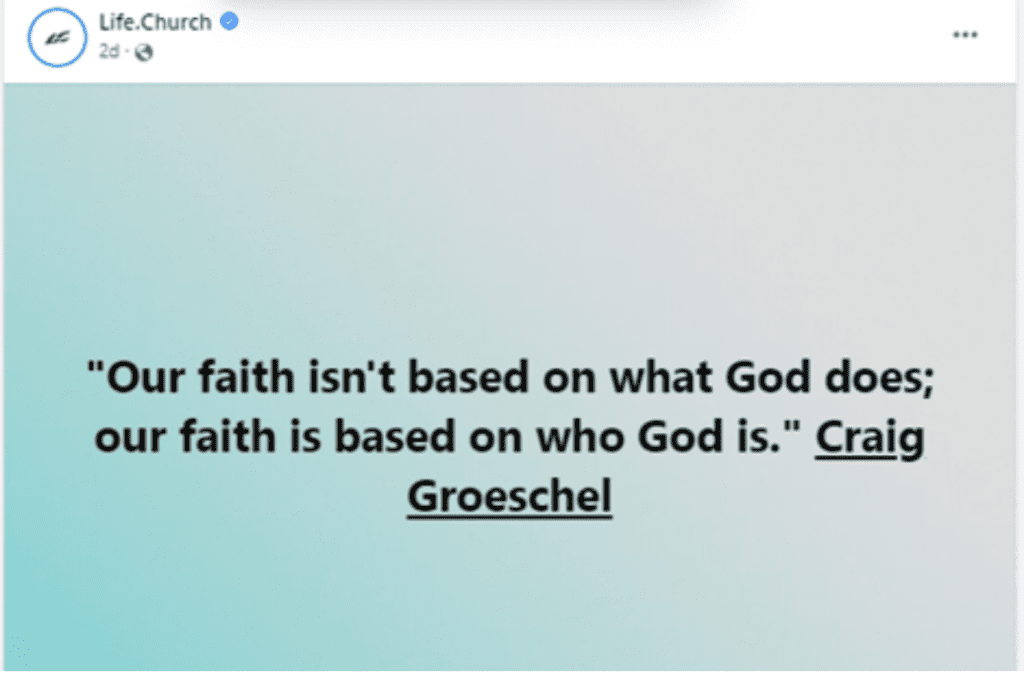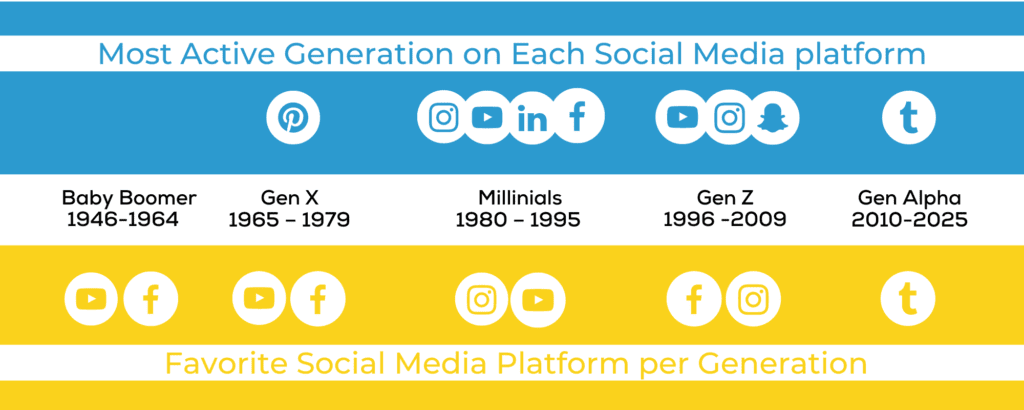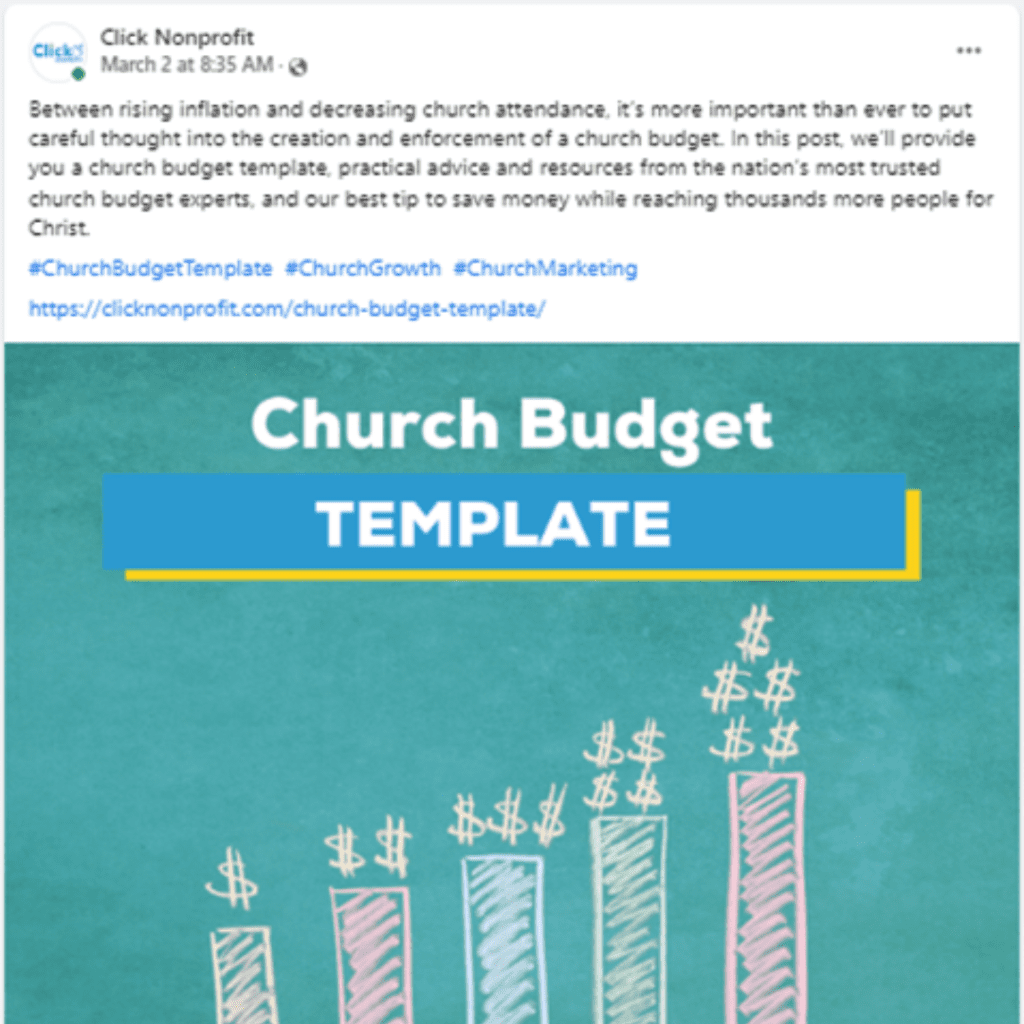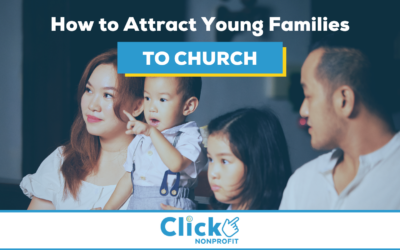Wise nonprofits and ministries gain valuable resources through social media, but it’s challenging to find the time and expertise to maintain a social media plan when you are busy saving the world. In this post, we’ll give you a simple guide to social media for nonprofits.
Continue reading for straightforward answers to your questions about who, where, when, why, what, and how to form a sustainable social media strategy for your nonprofit. You will find a few examples sprinkled along the way so you can see what engaging content crafted for the reader’s needs looks like. In the end, we have a special bonus tip to help you get more eyes and ears on your cause.

Quick sermon quotes encourage readers using content your pastor has already created.
Who are you trying to reach?
Just like any content strategy, your social media marketing has to start by defining who you are trying to reach. This begins with your audience profiles, known in the for-profit world as customer personas.
Review the profiles of the target beneficiaries and ideal supporters already being used to guide your nonprofit. For each of them, consider factors such as their age, gender, income, education, their felt needs, and how your organization meets those needs.

Where do they hang out?
As part of your audience profiles, include where your audience spends the most time on social media. You may choose to post the same content on a variety of platforms or focus on customizing your posts for one or two platforms.
The graphic below shows where each generation hangs out. The blue icons show which generation shows up the most for each platform. For example, Gen Z uses Snap Chat more than other generations. Millennials use Facebook and LinkedIn more than other generations. Millennials and Gen Z tie for the highest usage of Instagram and YouTube.
The yellow icons represent each generation’s favorite platform. Baby Boomers’ favorite platforms are YouTube and Facebook, but they don’t make up the largest population on those platforms. In other words, Baby Boomers aren’t on social media as much as younger generations are, but when they go online, they are usually on either YouTube or Facebook.

It’s worth noting that the youngest generation is all about TikTok. If your nonprofit is one of many who rescues children from abuse and trafficking, you may focus your efforts on TikTok to reach the young ones who need you while choosing another platform to connect with supporters.

Click Nonprofit partner, Liquid Church posted a two-minute video about an upcoming event. A staff member just held up her phone, showed a website she’s working on and encouraged church members to join them. Little things like emojis go a long way to catch someone’s attention. The post is quick, simple, and engaging.
When Should You Post?
You could turn the task of deciding the most active time to post into a full-time position because the data constantly changes. Most nonprofits have neither the time nor resources, so we will take a simple two-step approach.
Focus on consistency more than the precise time. Decide what frequency your team can handle, such as three posts per week for Facebook, once per week for YouTube, or three interactions per day for Twitter.
If you want a specific time, post according to the suggested time slot recommended by an analytics tool or your third-party publishing software.
When you decide on a content schedule, we recommend using a content calendar to help you plan and stay on schedule.

Here’s an encouraging post from Liquid Church. Again, quick text, cute emojis, and a 30-second stock video that helps stop the scroll and help the audience see themselves bonding with Jesus like the man in the video.
Why are you posting?
Many nonprofit marketers use social media to ask their readers to meet the needs of the organization through donations or volunteering, but your content will be much more effective if you provide value for your audience.
Flip the script and craft your social media content to meet their needs. People engage most with stories, so create content to inform, entertain, inspire, or educate your audience through story. By providing value and building trust first, you will establish relationships so people are more likely to respond when you ask for support.

Plain old un-decorated, pure Scripture gets the most attention. There’s still no better way to encourage the body of Christ than with the Word of God.

What will you share?
Consider unique ways to tell a story, such as sharing even a small win to thank your supporters, celebrate your beneficiaries, and encourage someone who needs your services.
Each platform is designed to share stories through a different medium. For example, Instagram is all about photos, while YouTube is for videos. Stop the scroll by creating drama, tension, or curiosity in the first few words. It doesn’t have to be long or expensive. Even a short piece to invite your audience behind the scenes or to encourage them will help build a relationship with your readers.

John Hagee Ministries had an interesting twist on encouraging people with Scripture and inviting them into daily readings. Each DIAMONDS for Daily Living Scripture included a link directly to Bible Gateway.
How will you reach them?
You will need tools to create and publish your content, including a graphic design tool, a word processor, and a publisher. We recommend one tool that can do it all for free: Canva. It’s one of the world’s most trusted design tools. Their Pro plan is free for nonprofits, and it includes scheduling capabilities right from the design, as well as a content calendar.

Followers of Elevation Church loved this reminder at the end of a long work week. Whatever difficulties you are dealing with, God is always there for you.
Bonus Tip
At Click Nonprofit, we help nonprofits and ministries manage the Google Ad Grant. That’s $10,000 in free advertising dollars every month you can use to drive additional traffic to your site, where you can then direct users to your campaigns and social media platforms. Contact us to find out if your organization is eligible for the grants.

Our last example is from our own social media. Our goal is to immediately provide the value to the reader so they’ll click through to read the post.
Conclusion
With a little planning, it is possible to implement a simple social media content strategy and use your ad grant dollars to maximize the impact. We hope this guide to social media for nonprofits helps you connect with your supporters and clientele and build awareness around your cause.




